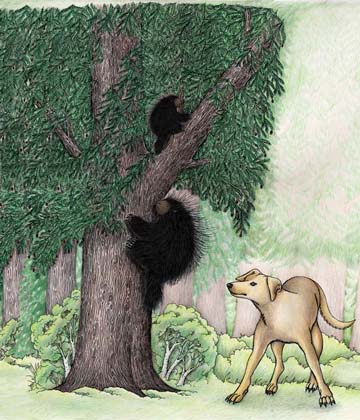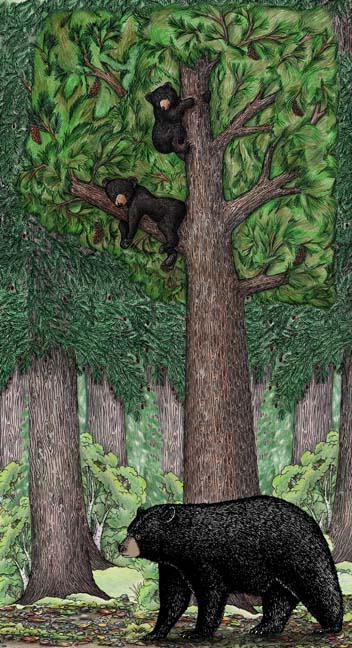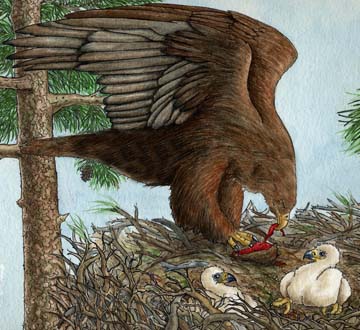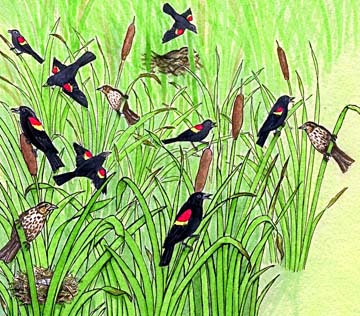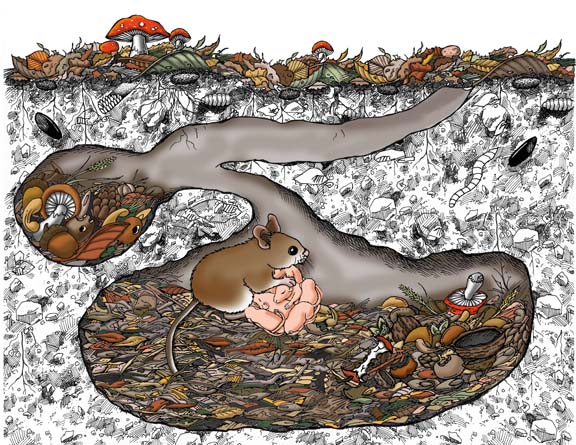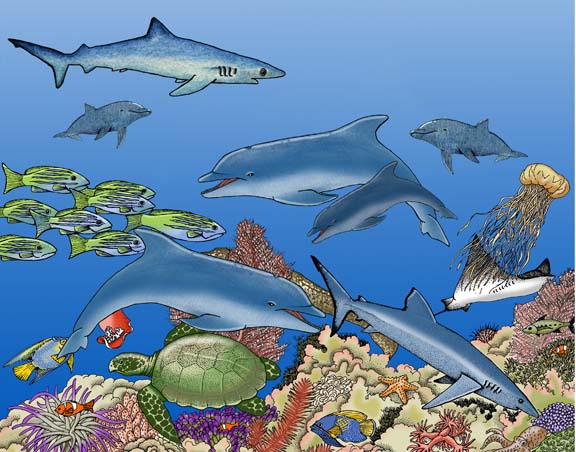

1-LS1-2. Patterns in Behavior of Parents and Offspring that Help Offspring Survive
Animals have many behaviors to help their offspring survive. In turn, baby animals behave in ways that stimulate protective or nurturing behaviors in their parents. For example, a human baby cries, a baby bird chirps and a kitten mews when they are hungry. In many mammal species, such as bears, bobcats, raccoons, porcupines the offspring can climb trees from a very young age. This helps them survive attacks by hungry predators. Try the Matching Activity.
Birds
Both male and female birds keep their eggs warm (incubation) and bring the hatchlings food.
In some species, the female birds are dull colored, which helps them blend in while sitting on the nest. This protects their offspring from predators. Both males and females will drive off predators with loud calls and aggressive behavior (diving and screeching).
Birds also preen their young with their beaks to pick off parasites.
When chicks are ready to fly they will model flight for them and aggressively drive away predators while they learn.
Mammals
In mammals, the female feeds the young protein rich milk until it can get food on its own.
The offspring are protected in a den or other safe place until they have learned to be safe from predators and the cold and rain. For mice this can be a matter of just a couple of weeks, while bear cubs stay with their mother for two to three years.
Females groom their young by licking their fur. This keeps them clean and free of pests and parasites.
When they are finally old enough to leave the den, the female may teach her young how to get food and avoid predators.
In the ocean, dolphins will defend their offspring from sharks and any other predators.
